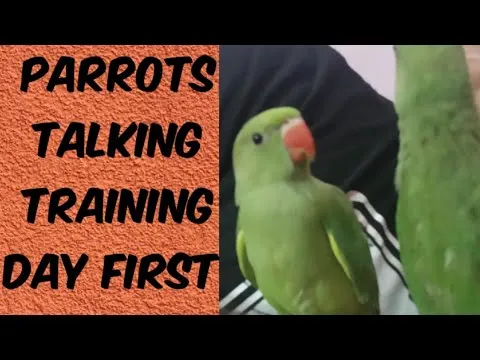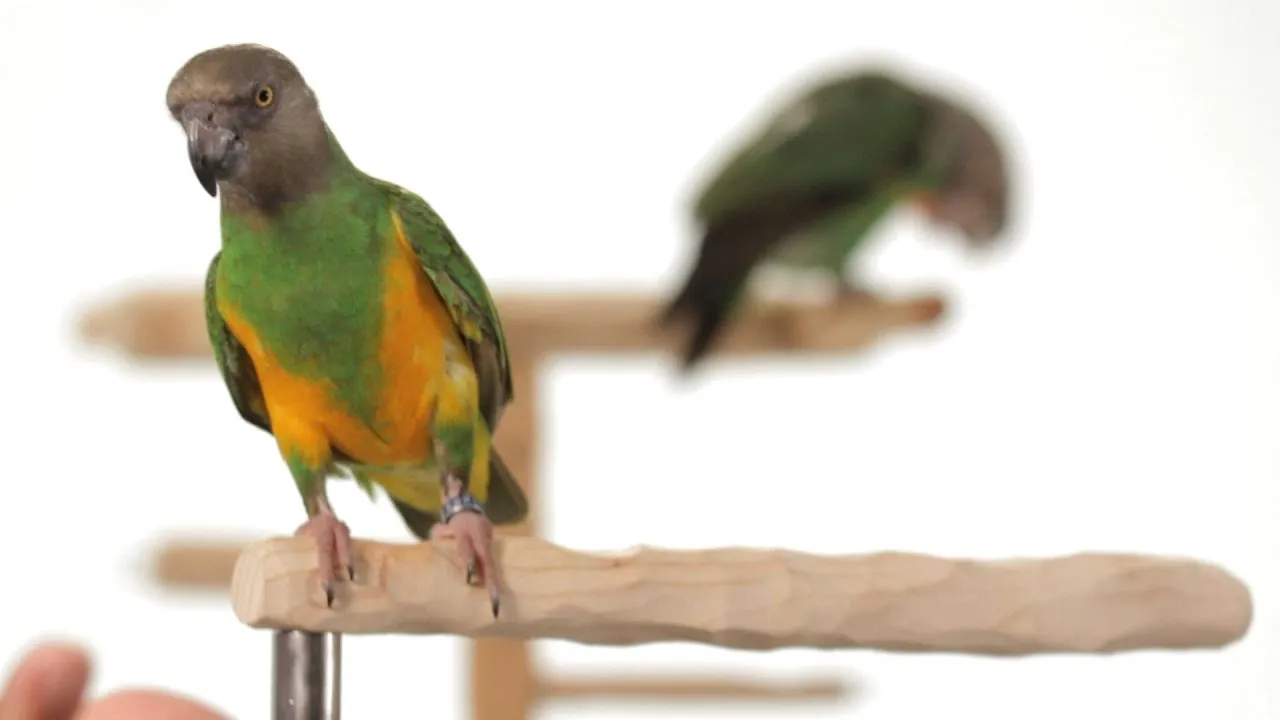Training parrots to talk can be an incredibly rewarding experience, both for you and your feathered friend. Parrots are intelligent, social animals that thrive on interaction and mental stimulation. By engaging them in training sessions, you're not just teaching them words; you're building a bond that enhances their overall well-being. In this post, we'll delve into effective strategies and techniques that can help you unlock your parrot's vocal potential, making your time together even more enjoyable.
Understanding Parrot Behavior

Before diving into training, it's crucial to grasp the unique behaviors of parrots. These fascinating creatures have specific needs and instincts that shape their actions and reactions. Here are some key aspects of parrot behavior to consider:
- Social Creatures: Parrots are highly social animals. In the wild, they live in flocks and rely on social interactions for survival. Understanding this need for companionship can help you provide a supportive environment.
- Curiosity: Parrots are naturally curious. They love to explore their surroundings, which makes them eager to learn new things. Use this curiosity to your advantage during training sessions.
- Vocalization: Parrots communicate through a variety of sounds. Each species has its unique vocal traits, and understanding these can help you predict what sounds your parrot might mimic.
- Attention Span: Parrots have a relatively short attention span, especially when it comes to repetitive tasks. Keep training sessions brief and engaging, ideally lasting between 5 to 15 minutes.
- Body Language: Pay attention to your parrot's body language. Flapping wings, raised feathers, or a turned head can indicate how they’re feeling. Recognizing these cues will help you approach training more effectively.
By understanding these behaviors, you can tailor your training methods to suit your parrot’s personality and needs, setting the stage for a successful learning experience.
Also Read This: Tips for Capturing Marketable Images: What to Shoot for Alamy
Choosing the Right Environment for Training

Creating the perfect environment for training your parrot can significantly impact their learning process. Parrots are intelligent creatures, and they thrive in settings that are not only comfortable but also conducive to learning. Here are some essential factors to consider:
- Quiet Space: Select a location that is free from distractions. Loud noises, other pets, or frequent foot traffic can hinder your parrot's ability to focus. A quiet room will help them concentrate on the training sessions.
- Comfortable Temperature: Ensure the training area has a comfortable temperature. Parrots are sensitive to extreme heat and cold, so a room that is too hot or too cold can lead to stress and affect their willingness to engage.
- Safe Environment: Make sure the space is safe for your parrot. Remove any potential hazards, such as toxic plants, chemicals, or small objects they could swallow. It's vital that your feathered friend feels secure while training.
- Freedom to Explore: While it's essential to have a designated training area, allow your parrot some freedom to explore outside the training zone. This can help reduce their stress and increase their eagerness to participate in training sessions.
- Positive Associations: Incorporate positive elements into the environment. Use their favorite toys or treats as part of the training space to create a positive association with learning and speaking.
By carefully selecting the right environment, you'll set the stage for effective training sessions that can help your parrot learn to talk!
Also Read This: Adding multiple owners in Behance
Essential Tools for Training Your Parrot
When it comes to training your parrot to talk, having the right tools can make a world of difference. Here’s a list of essential items that can help create a successful training experience:
- Treats: Use small, healthy treats as rewards for your parrot's efforts. These can include bits of fruits, nuts, or commercially available parrot treats. The key is to choose something they love!
- Clicker: A clicker can be an excellent tool for training. It helps create a clear communication signal. When your parrot performs the desired behavior, a quick click followed by a treat reinforces the action.
- Training Videos: Watching training videos can provide you with techniques and strategies to help your parrot learn effectively. Look for reputable sources that specialize in avian training.
- Interactive Toys: Toys that encourage mental stimulation can also be beneficial. They keep your parrot engaged and can be used as rewards during training sessions.
- Notebook or Training Journal: Keeping track of your parrot’s progress is vital. A notebook allows you to jot down what works, what doesn’t, and any milestones your parrot achieves.
By equipping yourself with these essential tools, you’ll be well on your way to creating an effective and enjoyable training experience for both you and your parrot!
Also Read This: How Much You Can Earn from Shutterstock and Maximize Your Profits
5. Step-by-Step Techniques for Teaching Words
Teaching your parrot to talk can be a rewarding experience, but it requires patience and a structured approach. Here’s a simple step-by-step guide to help you along the way:
- Choose the Right Time: Find a quiet time when there are minimal distractions. This ensures your parrot can focus on learning.
- Select Words Wisely: Start with simple, one or two-syllable words like “hello,” “bye,” or “good.” These are easier for your parrot to mimic.
- Use Repetition: Consistency is key! Repeat the chosen word frequently during interactions. The more they hear it, the more likely they are to pick it up.
- Associate Words with Actions: Use the target word during corresponding actions. For example, say “hello” when you greet them. This creates a connection between the word and its context.
- Encourage Mimicry: When your parrot attempts to repeat a word, reward them with praise or a treat. Positive reinforcement boosts their motivation!
- Be Patient: Not every parrot will learn at the same pace. Celebrate small victories and keep practicing without frustration.
Remember, the key to success is patience and persistence. With time and effort, your feathered friend will be chatting away in no time!
Also Read This: Get Festive with Canva Christmas Template
6. Utilizing Video Tutorials for Effective Learning
In today's digital age, video tutorials can be a game-changer for parrot training. They offer visual and auditory learning, making it easier to understand techniques. Here’s how to effectively use video tutorials:
- Search for Reputable Sources: Look for channels or creators who specialize in avian training. Check reviews and feedback to ensure quality content.
- Watch Before Implementing: Before you start training, watch the entire video to understand the technique thoroughly. This preparation helps you execute it effectively.
- Follow Along: As you watch, try to mimic the trainer's techniques. This hands-on approach enhances your learning experience.
- Take Notes: Jot down key points or tips that resonate with you. This can serve as a handy reference during your training sessions.
- Engage with the Community: Many video platforms offer comment sections. Engage with fellow bird enthusiasts to share experiences or ask questions.
- Record Progress: Consider filming your training sessions. This allows you to track your parrot’s progress and compare it with the techniques demonstrated in the tutorials.
By leveraging video tutorials, you can transform your parrot training into a more engaging and effective experience. Happy training!
Also Read This: How to View Connections on LinkedIn to Manage Your Network
7. Common Challenges and How to Overcome Them
Training parrots to talk can be a delightful journey, but it's not without its hurdles. Here are some common challenges you might face and tips on how to tackle them:
- Short Attention Span: Parrots, especially younger ones, can get bored easily. To combat this, keep your training sessions brief—about 5 to 10 minutes long—and filled with variety. Change up the words or phrases regularly to maintain their interest.
- Background Noise: Distractions can hinder your parrot’s ability to focus on learning. Ensure you train in a quiet environment away from loud TVs or music. You want their attention solely on you.
- Lack of Repetition: Repetition is key in teaching parrots to talk. If you notice your parrot isn’t picking up words, try repeating the same phrases consistently throughout the day. Use them in context to help reinforce their meaning.
- Fear or Anxiety: If your parrot seems nervous or anxious, take a step back. Spend some time bonding through play or gentle interaction before resuming training. Trust-building is essential in creating a comfortable learning environment.
- Inconsistent Training: Consistency is crucial. Try to train at the same time each day and use the same phrases. This structure helps reinforce learning and encourages your parrot to engage.
Also Read This: Crafting the Perfect LinkedIn Headline to Attract Ideal Opportunities
8. Maintaining Motivation and Engagement
Keeping your parrot motivated and engaged is vital for successful training. Here are some strategies to ensure your feathered friend remains excited about learning:
- Use Positive Reinforcement: Reward your parrot with treats, praise, or affection whenever they attempt to mimic a word or phrase. This reinforces their behavior and encourages them to keep trying.
- Incorporate Play: Integrate fun activities into your training sessions. Use toys or games that stimulate their mind and make learning feel less like a chore and more like playtime.
- Set Realistic Goals: Establish achievable milestones. Celebrate small victories, like your parrot saying a new word correctly. This recognition can boost their confidence and motivation.
- Change Your Approach: If you notice your parrot losing interest, switch up your training methods. Try different phrases, songs, or even varying your intonation to make sessions more engaging.
- Involve Others: Sometimes, introducing other family members into the training can spark interest. Parrots are social creatures, and seeing others engage can motivate them to participate more.
Comprehensive Tips for Training Parrots to Talk with Video Tutorials
Training parrots to talk can be a rewarding and fun experience for both the bird and the owner. With the right techniques and resources, you can enhance your parrot's ability to mimic speech. Below are some comprehensive tips to help you on this journey.
Understanding Your Parrot
Before starting the training process, it is essential to understand your parrot's personality and breed. Some birds are more inclined to talk than others. For instance:
- African Grey: Highly intelligent and excellent mimics.
- Amazon Parrots: Known for their clear speech and engaging personality.
- Budgerigars: Small but capable of learning a wide range of words.
Creating a Positive Environment
To foster a conducive learning environment, consider the following:
- Minimize distractions during training sessions.
- Provide a comfortable space for the parrot to feel secure.
- Use a calm and encouraging tone while speaking.
Effective Training Techniques
Utilize various methods to enhance your training:
| Technique | Description |
|---|---|
| Repetition | Consistently repeat words and phrases during training sessions. |
| Positive Reinforcement | Reward your parrot with treats or praise when it mimics sounds correctly. |
| Video Tutorials | Use online resources and video tutorials for additional tips and techniques. |
Utilizing Video Tutorials
Video tutorials can provide visual guidance and inspiration. Platforms like YouTube have numerous channels dedicated to avian training. Look for videos that:
- Show real-time training sessions.
- Explain techniques in detail.
- Demonstrate positive reinforcement methods.
By following these comprehensive tips and utilizing available resources, you can enhance your parrot's ability to talk, creating a strong bond with your feathered friend.
Conclusion and Next Steps
In conclusion, training your parrot to talk requires patience, understanding, and the right techniques. Start by familiarizing yourself with your parrot's breed and personality, create a positive environment, and consistently use effective training methods. Explore video tutorials for further insights, and enjoy the rewarding experience of communicating with your feathered companion!